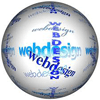6 Important SEO Design Tips

Web design can no longer be considered as an isolated part of marketing maneuvers. Web design, besides the so called aesthetic point of view, has a much deeper and graver impact on traffic and conversions.
Impact of Web design
A majority of studies revealed that design elements often play a bigger and more powerful role than content, in terms of building trust in users. In a recent study being asked to describe the reason of not putting trust in a website, 94 percent of respondents said that it was the design elements that created repulsion in them and only 6 percent of respondents cited specific content as the reason of their mistrust. In the same study following design elements have been cited as culprit for building mistrust in visitors. Let us have a look at them.
- Absence of a simple and user-friendly layout
- Pop-up ads and distractions
- Difficult-to-read text
- Mundane and non-impressive design
- Slow loading of Web pages and content
Let us now offer six important tips for designing for better and more impactful SEO.
1. Responsive design
There's no denying mobile's impact on researching and buying online and off.
Aside from it being Google's recommendation, responsive Web design keeps up with user expectations - taking the shape of any screen size automatically. For those designing to enhance their company's search rankings, responsive Web design is the leading choice.
2. Optimizing images
Images play an important role in page loading time, the look and feel of a site and the engagement of a user. Here are some tips:
- Renaming the filename of your image by including specific keywords is a good way to optimize images with text.
- Using all useful aspects of HTML for inserting an image on the page is another way to do it.
- Creating an image caption just beneath the image is another way to optimize it.
- Lastly, using appropriate format of images will help you make the loading time faster.
3. Design should give priority to text
Though search engine crawlers can find all types of content, text still enjoys the priority for search ranks. Naturally, your design should also give priority to text throughout the website. Your aim should be including or displaying relevant text on every page of the website. You can further optimize each page with some texts and tweaks such as:
- Each page should have a SEO title with 50 to 60 characters and a meta description of 150 to 160 characters. Both SEO title and meta description should be unique and should have included the main keyword phrases of the page.
- Instead of including important information in images offer them in text. Remember, Google crawler does not recognize text displayed as part of images.
- Lastly, include relevant keywords in your URLs.
4. Optimize title tags with keywords
Implementing keywords or a variation of a set of keywords into the title tags is important to get noticed by the search engine crawler. The title tag makes the very first impression to both the users and search engines as for performing searches on the targeted keywords.
5. Give priority to text-based navigation
As we have already discussed search engine crawlers give priority to text information more than anything else. Naturally, all the navigation buttons and menu sections on your website should be text based for the users to use them at ease and the search engine crawlers to discover them easily.
6. Let your users redirect easily
When redesigning or creating a new version of a website, ensure an easy way for users to redirect to new website pages. When you delete the older page, visitors will receive a 404 error meaning the page no longer exists. In case of a good search rank of the old page you lose all the traffic and search engine rank benefits. Do not forget to provide a redirect for each redesigned Web page. In this respect using 301 redirects is helpful to tell search engine crawlers that this old page URL has become that new page URL. Through this you can ensure keeping the traffic and SEO value intact for your newly refurbished Web page.
In case of WordPress, using a simple plugin called redirection can help you doing this at ease. Finally to test that the redirect works, you can set the website up on Google Search Console. Through this you can keep track of crawler errors and know which links on the website result in Not Found error.
Finally, you should let the users know apologetically about the creation of the new Web page version and the redirect taking them to a new redesigned page. While explaining the reason for the redirect you can offer them links to your homepage, product page, service page, contact information page, about page, blog, etc.









